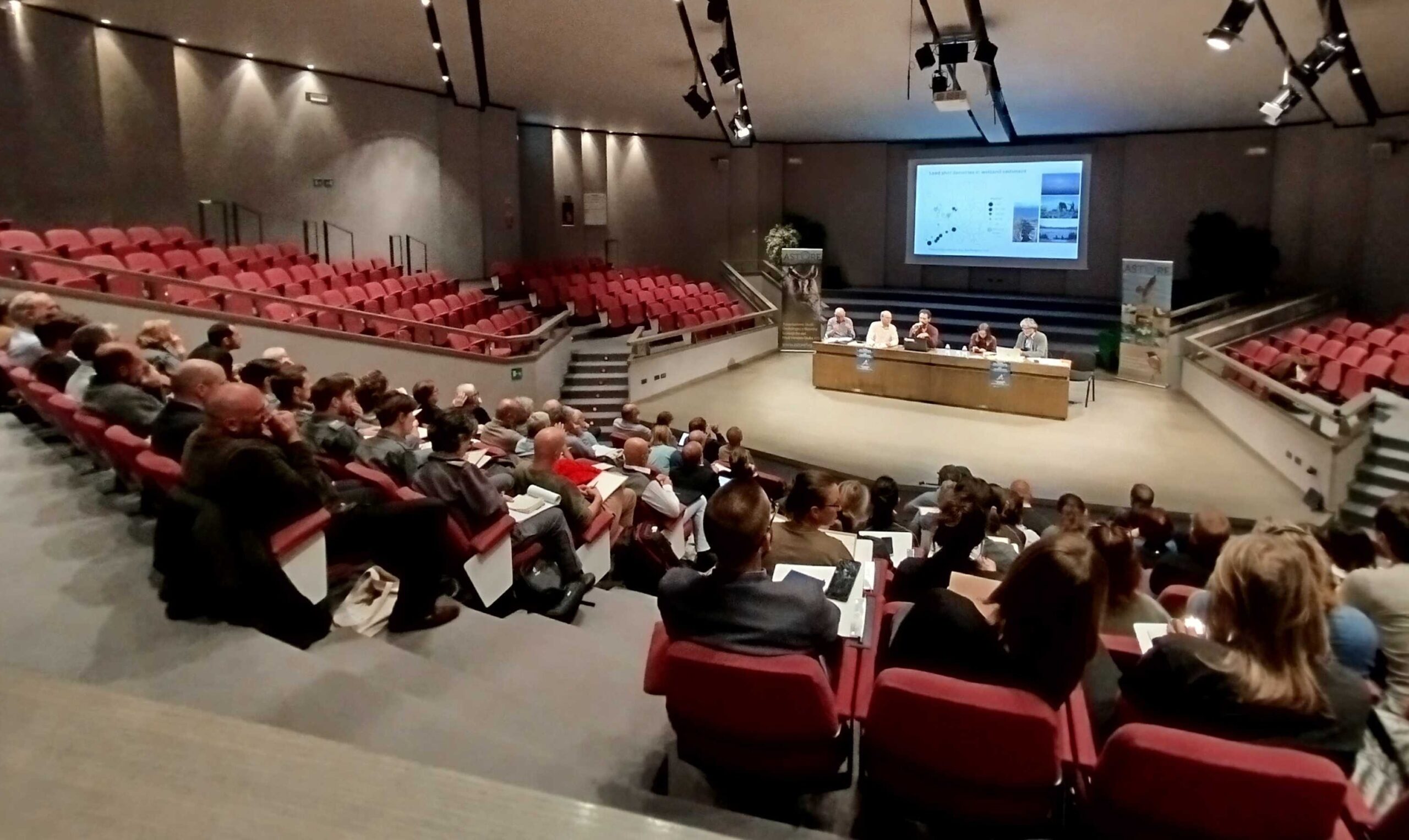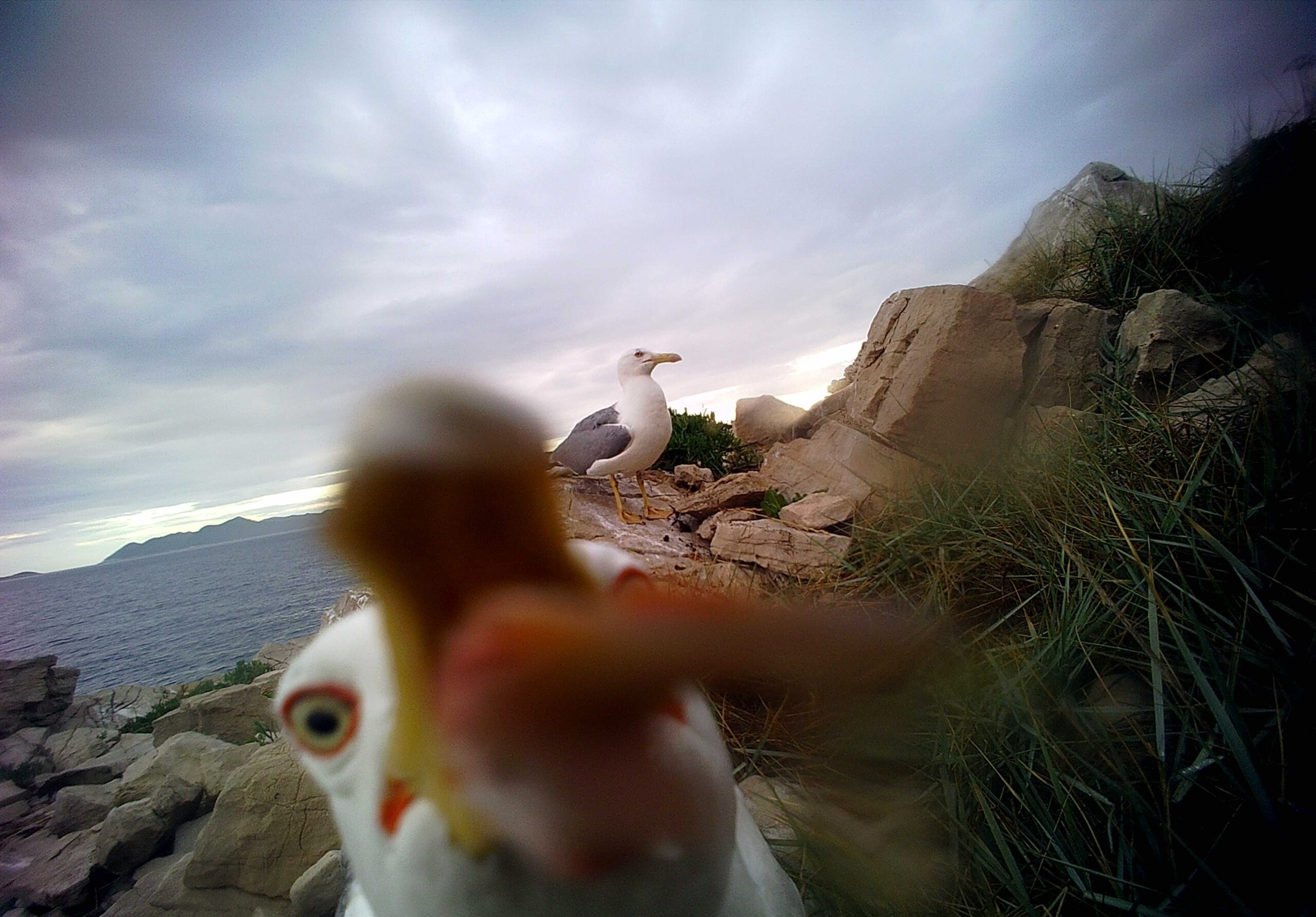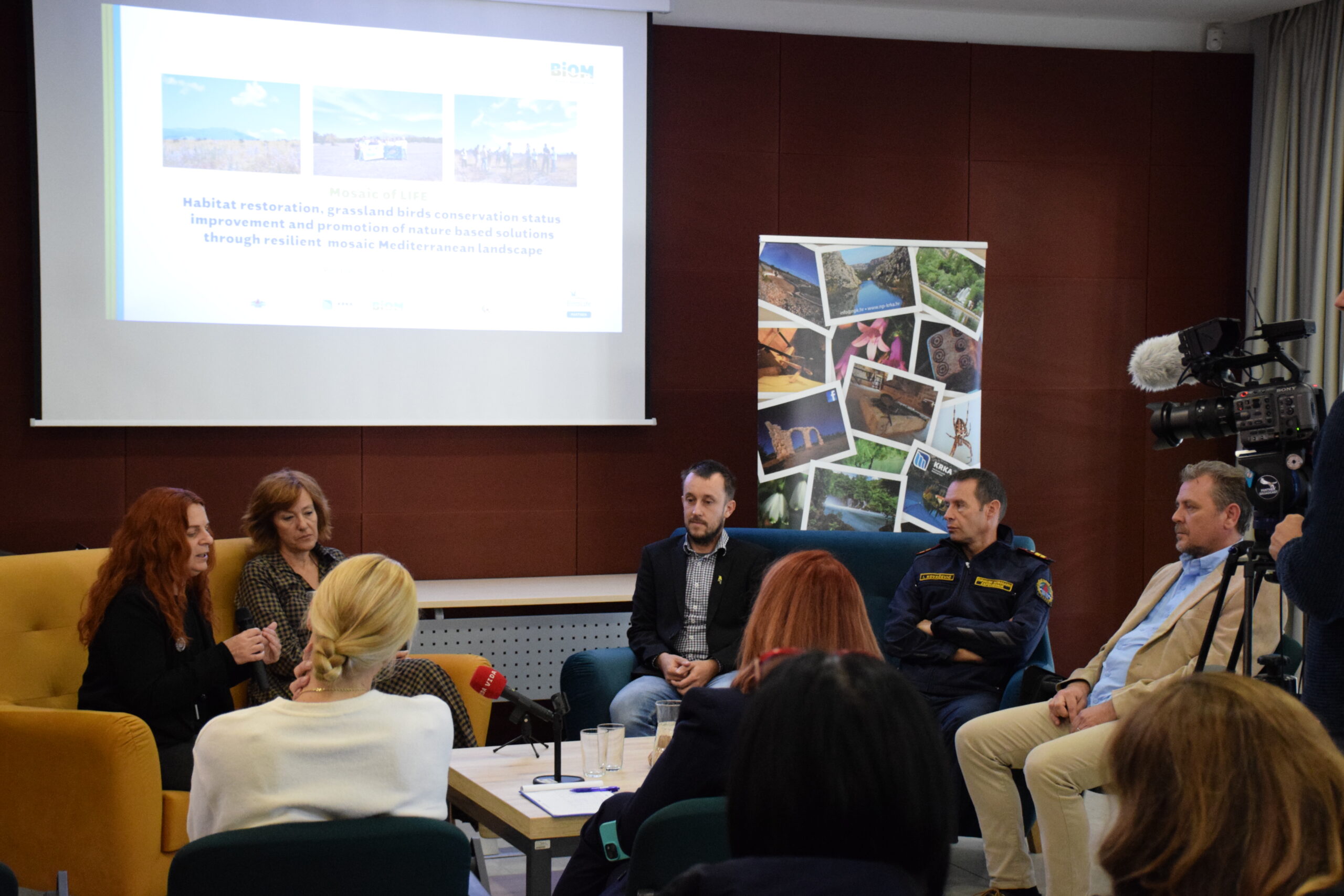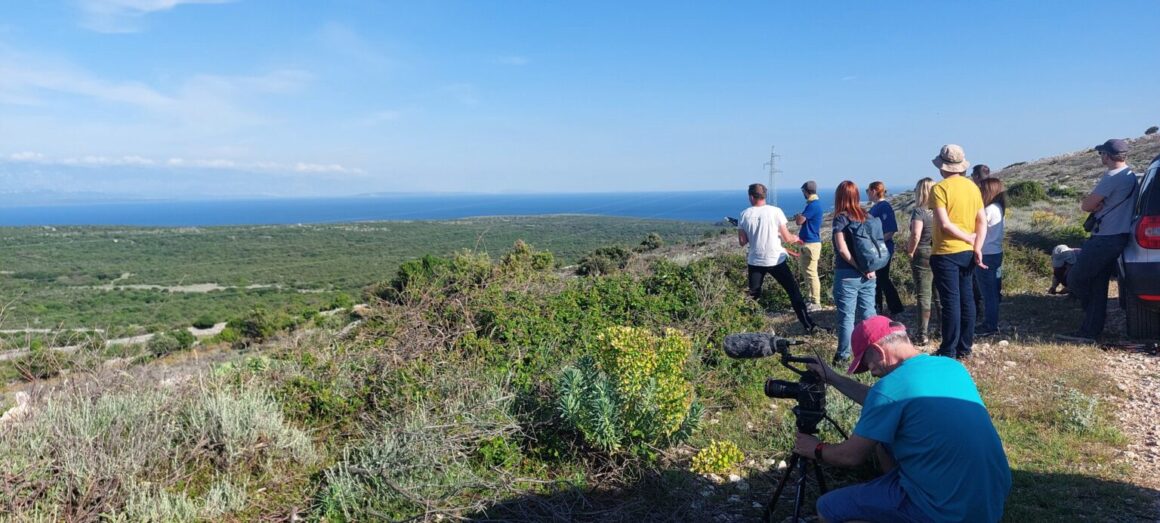
Overgrowth of pastures poses a threat to biodiversity throughout Croatia’s coastal and mountainous regions. This is also the case on the Kvarner islands, and in order to preserve them, appropriate conservation measures must be initiated as soon as possible.
With the aim of encouraging the revitalization of overgrown grasslands on the Kvarner islands and beyond, a workshop was held on the island of Cres on May 19–20, 2025. Its goal was to transfer knowledge and experience gained through the Dinara back to LIFE project, which involved restoration of grasslands over an area of approximately 180 ha, and initiated grazing with mixed herds on an additional 500 ha as a method of maintaining them and slowing further overgrowth. The project was implemented from 2020 to 2023 in collaboration with project partners: Croatian Forests Ltd., the Faculty of Agriculture of the University of Zagreb, and the Local Action Group “Cetinska krajina”.
Participants in the workshop included representatives from the Public Institution “Priroda” of the Primorje-Gorski Kotar County, the Public Institution “Učka Nature Park,” the City of Cres and the Municipality of Baška, the association Pramenka and the local agricultural cooperative PZ Cres, the island’s development agency OTRA, the association “Our Children” from Mali Lošinj, the beekeeping association KUŠ CRES – MALI LOŠINJ, Croatian Forests (Buzet branch), the Nature Protection Directorate of the Ministry of Environment and Green Transition, and the Directorate for Agricultural Support and Rural Development of the Ministry of Agriculture, Forestry and Fisheries.
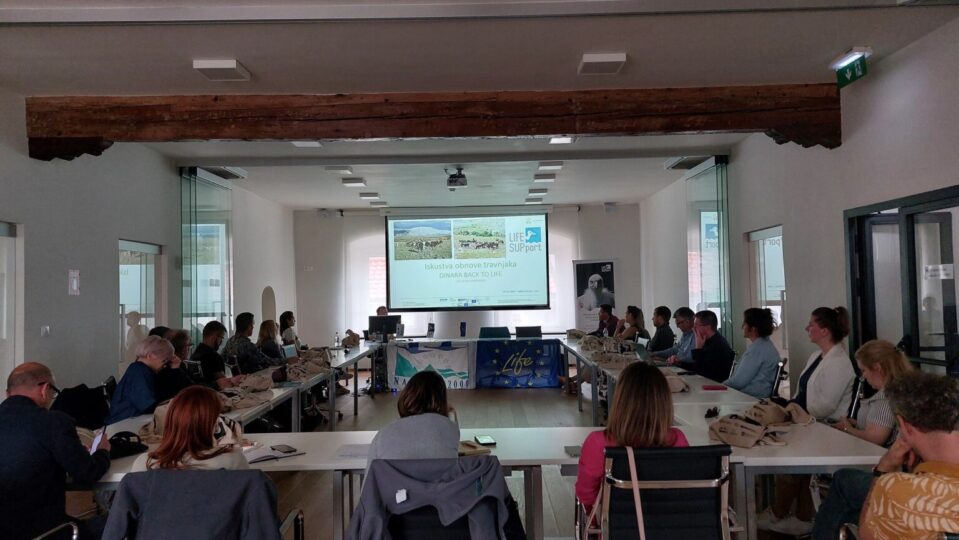
The workshop was organized by the association BIOM as part of the LIFE SUPport project, which aims to conserve the last population of griffon vultures (Gyps fulvus) in Croatia, located on the Kvarner islands. Griffon vulture conservation is closely linked to pasture conservation, as vultures feed there, primarily on dead sheep — their main food source. On this territory, the coexistence of vultures and shepherds has lasted for over a thousand years.
On the first day of the workshop, participants visited two field sites where overgrown pastures were restored by the island’s agricultural cooperative and local livestock farmers. They learned how these areas were restored, the challenges faced, and the techniques used during the restoration efforts on Dinara. During the Dinara project, BIOM worked closely with local livestock farmers to select locations most beneficial to them, promoting the continuation of extensive livestock farming in the Dinara region.
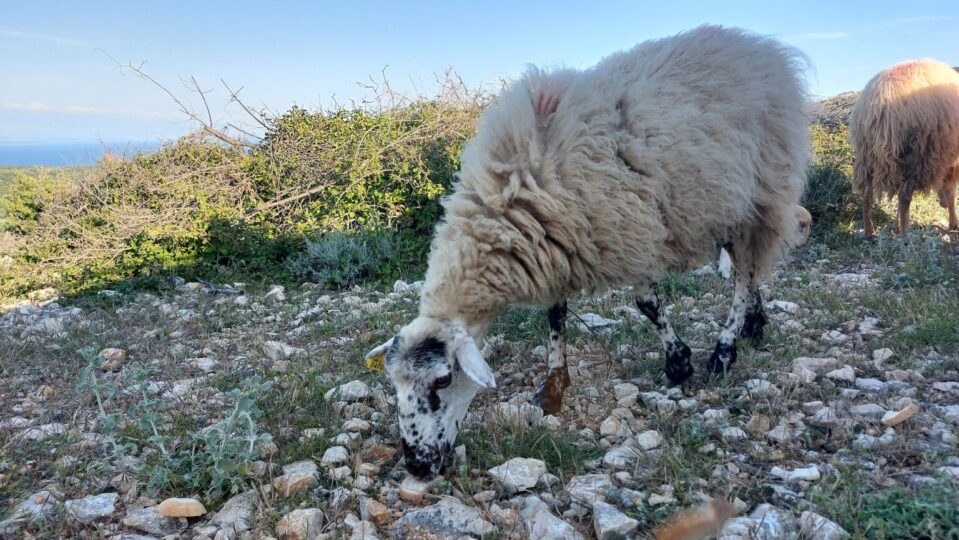
On the second day, BIOM representatives gave a series of presentations introducing the LIFE SUPport and Dinara Back to LIFE projects, and presented the grassland restoration techniques used on Dinara: manual removal of woody vegetation, grazing with mixed herds, and controlled burning. They also presented the current state of grasslands on the Kvarner islands, as determined through remote sensing conducted as part of the LIFE SUPport project. A final discussion was held to address the needs and possibilities for restoring grasslands on the Kvarner islands.
There is a clear need to clear overgrown grasslands on Cres, which could then be used as pastures, thereby supporting the continuation of sheep farming. The main obstacles are the lack of financial resources and the limited availability of funding sources for such activities. Participants also emphasized the problem of complex administrative procedures and the current agricultural subsidies that do not meet the needs of livestock farmers in the Kvarner region. Farmers on the island of Cres also pointed out additional challenges: damage caused by wild boars and fallow deer, reduced grazing availability, and the destruction of dry stone walls and fences — all of which are contributing factors to their abandonment of sheep farming.
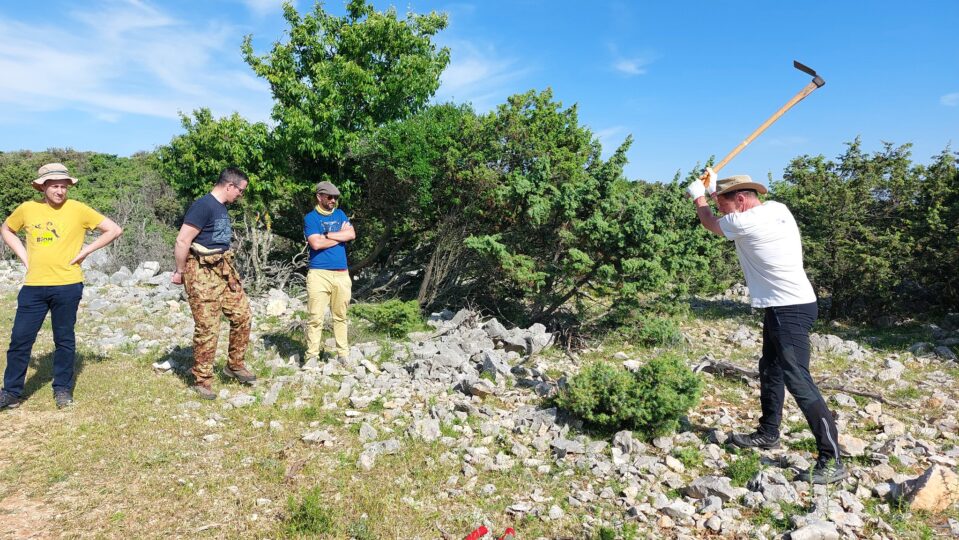
Despite the challenges, the conclusions of the workshop were encouraging. The need for an intersectoral approach and improved communication among all relevant stakeholders (livestock farmers, hunters, tourism workers, foresters, NGOs, and representatives of the ministries responsible for agriculture and nature protection) was recognized. Such collaboration is essential to address the issues at hand and ensure the survival of sheep farming on the Kvarner islands — and with it, the continued presence of griffon vultures.




